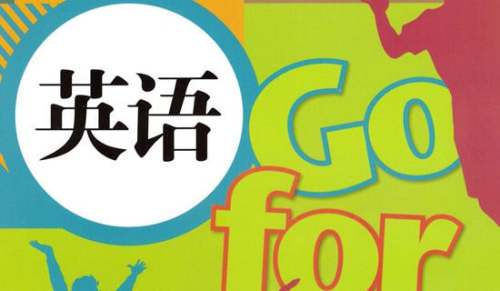- 相关推荐
《牛津小学英语》6B Unit 6教学设计
作为一名为他人授业解惑的教育工作者,就有可能用到教学设计,教学设计要遵循教学过程的基本规律,选择教学目标,以解决教什么的问题。那要怎么写好教学设计呢?以下是小编整理的《牛津小学英语》6B Unit 6教学设计,仅供参考,大家一起来看看吧。

《牛津小学英语》6B Unit 6教学设计1
一、教学内容:《牛津小学英语》6b unit 6复习课
二、教学目标:
1、知识目标:熟练运用be going to表达计划或打算。
2、技能目标:能独立收集信息,并正确处理信息。
3、情感目标:保持英语学习的兴趣,能自信地用所学英语交流。
三、教学重难点:be going to 的灵活运用和综合运用。
四、教学准备:一段视频材料,一段听力材料,练习纸(师生每人一张)
五、教学过程:
step1: introduction
(1) 引入本课话题。
t: today we are going to review unit6, what’s the title of this unit?
ss: planning for the weekend.
t: right. in unit6,we learned “be going to” 这个句型来表达自己的计划或打算,比如plan for the weekend(板书单词weekend)或plan for tomorrow(板书tomorrow)
教师引导学生说出“plan for next week/month/year…等,并板书学生所说的短语)
(2) 学生根据下图提示,每人写一句话。
t: i’m going to have a birthday party this weekend. what are you going to do? please write one sentence about your plan.
play…
be going to
make…
have…
go…
see…
[设计意图]:复习课对学生的要求不能仅停留在口头表达上,而应是既动脑、动口,又动笔。通过写的活动让学生更加注意时态的时间意义及相应的动词形式,以提高学生的语言运用能力。
step2: group activities:
(1) 师生一起探讨如何完善这份计划
t: …is going to have a picnic this weekend. who is going to have a picnic this weekend,too?
s1: i’m going to have a picnic this weekend,too.
t:oh,really? you two come here, please. you are going to have a picnic this weekend. what time are you going to meet?(板书问句:what time are you going to meet?)
s1: we are going to meet at eight in the morning.
t:(向其他学生) do you have any questions about their plan? please write them down.
(学生四人一组讨论,并将讨论的问题写在一张纸上,站在讲台上的两位同学也同时讨论如何完善他们的计划)
[设计意图]:小组合作学习有利于学生积极参与课堂活动,并开动脑筋;让学生写出讨论的问题有助于学生注意单词的拼写。
(2) 各组派代表提问讲台前的两位学生。
step3: more practice
(1) 为了帮助学生复习,巩固和正确运用一般现在时和一般过去时,教师与学生进行如下对话:
t: i’m going to go fishing this weekend. i like fishing. do you like fishing?
s1: no, i don’t like fish.
t: ( to s2) does s1 like fishing?
s2: no, she doesn’t.
t: do you like fishing?
s2: yes,i do.i like fishing.
t: did you go fishing last weekend?
s2: yes, i did. i went fishing last weekend.
t: ( to s3)did s2 go swimming last weekend?
s3: no,he didn’t .
t: what did he do last weekend?
s3: he went fishing.
t: what did you do last weekend?
s3: i visited my grandparents.
t: how do you usually spend your weekend?
s3: i usually watch tv or play computer games at weekends.
[设计意图]:一句“do you like fishing?”将课堂教学由复习一般将来时巧妙地转入下个环节,通过师生之间的对话帮助学生复习所学时态,把对语言形式的训练变成了自然、有意义的交际活动,摆脱了机械、枯燥的语法训练模式。此外,连续提问的方式,以提醒学生认真倾听别人的发言,将看似个别训练的活动自然地变成对全体学生的训练。
(2) 用课件将一般现在时,一般将来时,一般过去时和现在进行时作对比,帮助学生梳理知识网络。
(3) 读故事并填空
学生阅读以下故事,并用单词的正确形式填空:
a running race
rabbit: hello, i’m a lovely rabbit.last time, the tortoise and i
(have) a running race. he (run) faster than me . i
(be) still not happy. now i’m (call)him.
rabbit: hi, is that mr. tortoise?
tortoise: yes, this is mr. tortoise (speak)
rabbit: are you free tomorrow?
tortoise: yes. what are you going to do?
rabbit: i (have)a running race with you tomorrow. would you like to come?
tortoise: sure. where are we going to (meet)
rabbit: in front of miss cat’s house.
tortoise: when?
rabbit: at nine o’clock.
tortoise: ok. see you tomorrow.
rabbit: see you.
[设计意图]:由句子到段落再到篇章的练习形式,让学生对不同的时态及其用法有了更为清晰的认识和理解。
step4: listening practice
教师出示视频,让学生做听力练习,并回答问题。
step5: consolidation and practice
教师呈现课前制作好的'海报,给学生2-3分钟的时间阅读。
good news!
go to huangshanhu park this children’s dayby bus.
meet at 8:30, in front of our primary school.
go fishing in the morning.
have a picnic at 10:45 on the grass.
have a singing contest in the afternoon.
go back home at 4:10 by bus.
(2)分层作业:
教师给出短文的开头(如下):
last sunday was mother’s day. i for my mother. she was very happy. i was happy, too.
children’s day is coming…
学有余力的学生根据以上信息续写短文。中等水平的学生回答以下问题,然后连成一段小短文。
where are you going this children’s day?
how are you going to get there?
what are you going to do in the morning in the park?how about the afternoon?
are you going to have lunch at home?
what time are you going to get back home?
学习困难生根据所给信息完成下列填空练习:
sunny and warm wednesday, may 15th
children’s day plan
last sunday was mother’s day. i for my mother. she was very happy. i was happy too.
children’s day is coming. i’m going to huangshanhu park with my classmates by .
we’re going to meet 8:30
our primary school.
we’re going to in the morning.
we’re going to .
we’re going to at 4:10.
huangshanhu park is very beautiful. i’m sure we’re going to have a good time there.
[设计意图]:根据学生英语水平参差不齐的实际情况设计三个层次的练习供学生选择,让每位学生都能体验到学习成功的快乐。
step6: summary and homework:
教师总结本节课的重点内容,并布置作业:以小组为单位,续编龟兔赛跑的故事。
《牛津小学英语》6b unit 6教学设计 来自。
《牛津小学英语》6B Unit 6教学设计2
教学内容:《牛津小学英语》6b unit 6 f play a game g listen and repeat h sing a song.
教学目标:
1、了解字母组合ow在单词中的读音。
2、能唱歌曲will you join me?
3、熟练掌握本单元所学内容。
教学重点:熟练掌握本单元所学内容。
教学难点:了解字母组合ow在单词中的.读音。
教具准备:录音机、磁带、小黑板、骰子、棋子等。
教学过程:
step1 warm up
1. greetings
2. free talk
就本单元所学的内容进行自由交谈,可采用师生间、生生间、小组间等形式进行。
step2 revision
1. 齐读e read and number。
2. 学生小组内准备朗读并表演对话。
3. 教师抽查,全班评议。
step3 presentation and consolidation
1. play a game
①教师事先布置学生根据图例,了解有关游戏规则和方法,准备好游戏工具,包括骰子和棋子。
②指导学生可在小组内开展游戏活动。
③教师抽查学生开展游戏的情况。
④教师可鼓励学生自己自创新的玩法,在游戏中进一步巩固所学知识。
2. listen and repeat
①教师让学生自己朗读单词,边读边体会字母组合ow在单词的读音。
②指导学生听录音跟读单词和句子,教师可利用图片或多媒体课件帮助学生理解句意。
③教师可指导学生朗读,也可在学生中开展朗读比赛。
④学生自己归纳整理其他例词,编写绕口令或其他句子并练习朗读。
⑤汇报结果,教师相机板书。
snowmen
snowball
row rowing
show know
snow
blow low
snowy
snowman
lower slow
slower
3. sing a song
①讲解歌词大意。
②读歌词。
③听录音。
④听录音跟唱。
step4 homework
1、全面复习本单元所学内容。
2、背诵g listen and repeat并试着归纳其它例词。
3、预习《补充习题》unit 6。
板书内容
snowball
snowmen
snowman
snowy
snow
row rowing show
blow know low
lower slow slower
板书设计:
《牛津小学英语》6B Unit 6教学设计3
教学内容: g. listen and repeat h. say a rhyme及练习册
教学目标:
1、熟练掌握四会词汇和句型。
2、了解字母组合ur在单词的读音。
3、有表情地诵读歌谣i want to write a letter。
教学重点:
1、熟练掌握四会词汇和句型。
2、了解字母组合ur在单词的读音,并能扩充举例。
教学难点:正确理解歌谣含义,并能有表情地诵读。
教具准备:挂图、磁带、小黑板
教学过程:
step 1 warm up
1、greeting
2、listen a rhyme: i want to write a letter.
3、revision.
组织学生听d部分录音资料,提问相关问题:
①how old is helen? ②does helen live in nanjing?
③what’s the name of helen’s school? ④what are helen’s hobbies?
回答时学生间可采用男、女间,半班间,同桌间等多种问答形式进行操练。
step 2 presentation
1、listen and repeat
本部分是语言训练项目,教师应指导学生正确朗读单词及句子,并让他们体会字母组合ur在单词中的'读音。
①教师让学生自己朗读单词,边读边体会字母组合ur在单词中的读音。
②出示单词hurt, nurse, thursday, turn,集体认读。
③指导学生听录音跟读单词和句子。
④教师引导学生看黑板朗读,也可在学生中展开朗读竞赛,看谁读得又快又准。
⑤鼓励学生自己归纳整理其它例词,编写成绕口令或句子练习朗读。
2. say a rhyme
①教师播放小诗录音,引导学生分句跟读。
②教师与学生按节奏诵读小诗。诵读时可根据节奏和内容做动作,以帮助记忆。
③指名读。 ④小组间试着编歌谣。
step 3 doing exercises
1. listen and number
听录音,根据所听到内容的先后顺序,在相应图中的方框内写上序号。
教师让学生先看图,用英语说出节目名称,再做此练习。
2. listen read and judge
听录音,读句子,根据所听内容判断句意是否正确。
教师让学生先看句子,读懂大意,听录音时注意进行方法指导。
3. look and write
看图,根据上下文完成句子。
教师指导学生边看图边读句子,在此基础上完成此项练习。
4. read and answer
朗读短文,根据短文内容回答问题。
5. read and complete
朗读并完成句子。
6. look, read and write
看图完成句子。
step 4 homework
1、练习册中的e、f两题作为家庭作业。
2、朗读并抄写本单元要求四会的单词各两遍,句子各两句。
3、鼓励学有余力的学生用英语与外籍朋友或其他学校的学生通信。
板书内容:
1、课题:unit 7 a letter to a penfriend
2、单词:hurt, nurse, thursday, turn
3、句型:last thursday the nurse hurt her fingers and they turned black and blue.
板书设计:
【《牛津小学英语》6B Unit 6教学设计】相关文章:
牛津小学英语说课稿06-20
牛津小学英语说课稿02-16
牛津小学英语说课稿15篇02-21
牛津小学英语说课稿(15篇)03-01
小学英语教学设计03-21
小学英语优秀教学设计01-14
小学英语教学设计05-14
小学英语教学设计(优选)08-15
[精华]小学英语优秀教学设计05-31